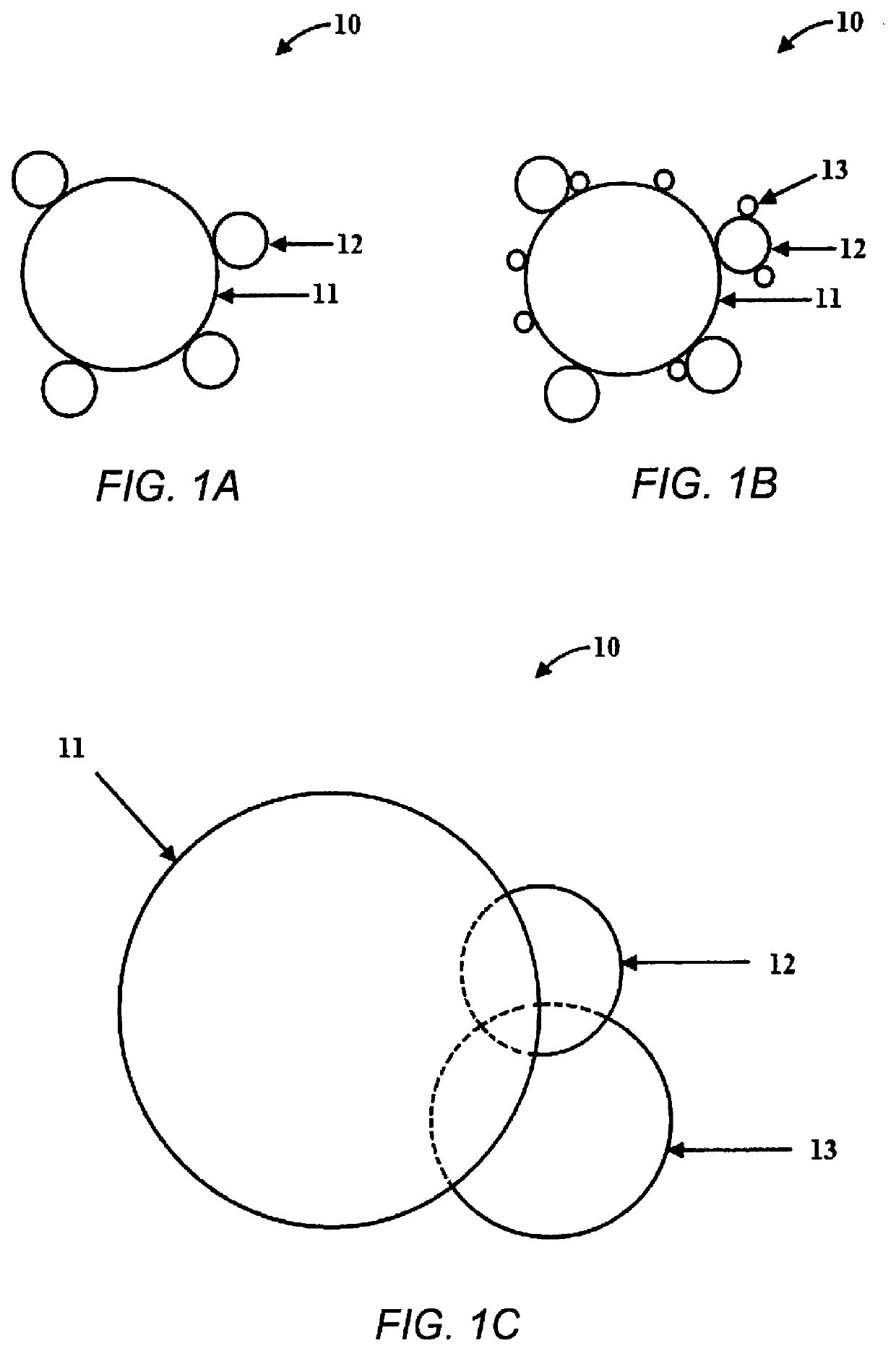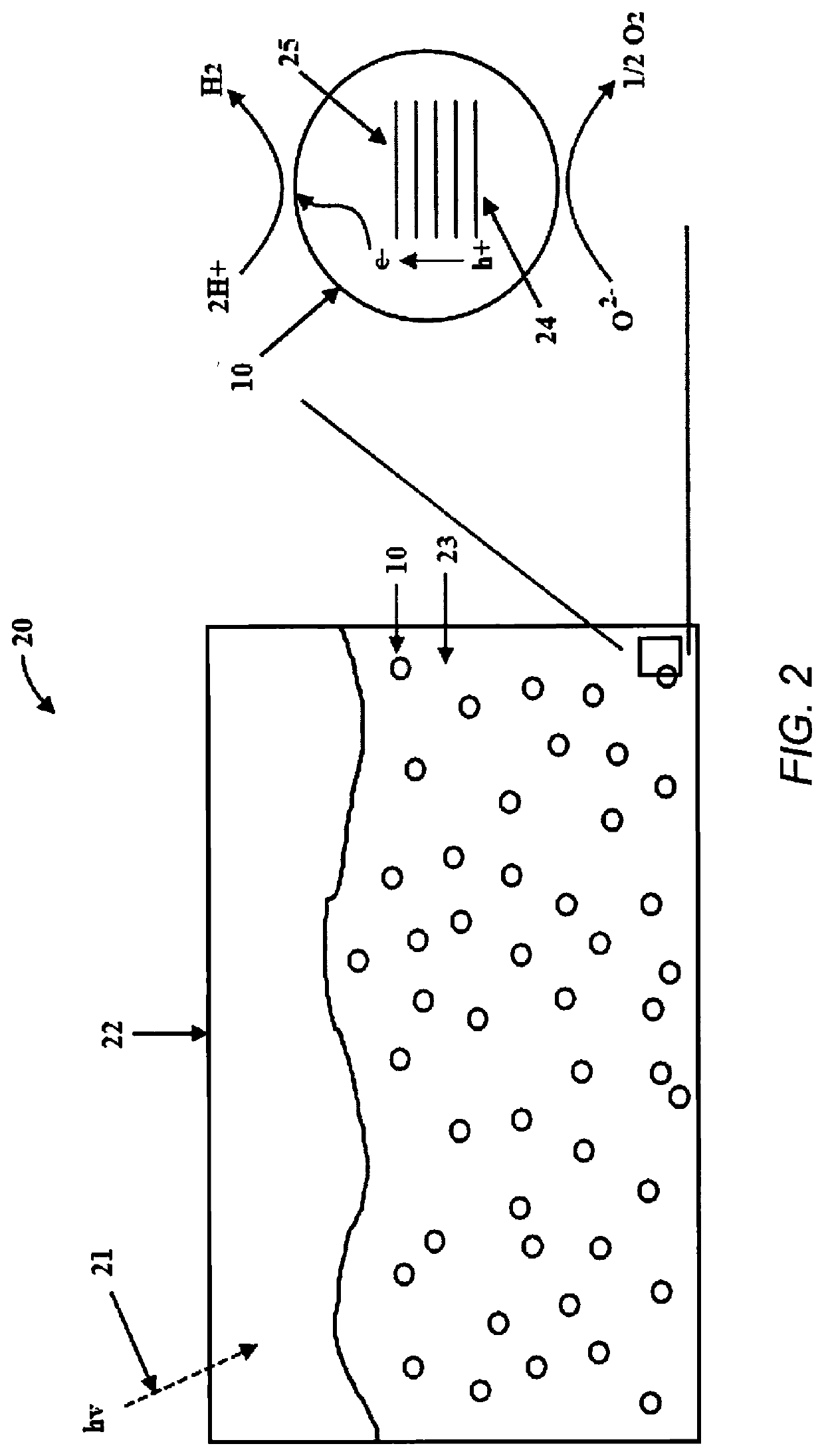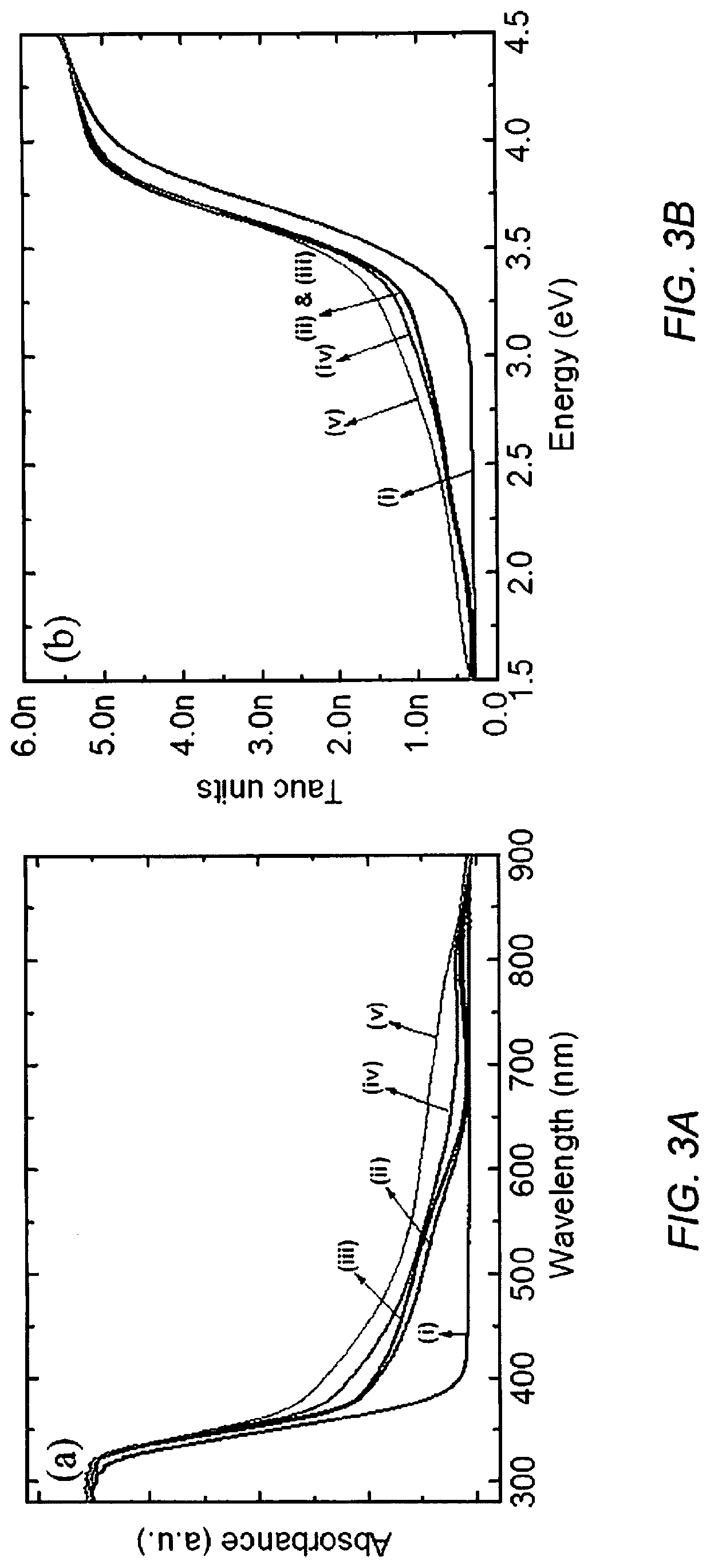Photocatalytic water splitting with cobalt oxide-titanium dioxide-palladium nano-composite catalysts
a photocatalytic and nano-composite technology, applied in the field of composite photoactive catalysts, can solve the problems of reducing the probability of electron-hole recombination events, increasing the life of charge carriers, etc., and achieves the effects of increasing the likelihood, maximizing the hydrogen (h2) and (o2) production, and maximizing the photocatalytic splitting of water
- Summary
- Abstract
- Description
- Claims
- Application Information
AI Technical Summary
Benefits of technology
Problems solved by technology
Method used
Image
Examples
example 1
Preparation of Photocatalysts
[0057]The CoOx—TiO2 photocatalysts were prepared by wet impregnation. Anatase TiO2 from Hombikat was used as the support catalyst. Different loadings of Co (0, 0.5, 1, 2 and 4 wt. %) on TiO2 support were prepared by adding known amount of Co(NO3)2.6H2O salt solution to 500 mg of TiO2 support. Excess water was evaporated to dryness under constant stirring with slow heating at 80° C. The dried photocatalysts was calcined at 350° C. for 5 hours to improve the crystallinity.
[0058]Photocatalysts with dual co-catalysts of Pd and CoOx were prepared by co-impregnating the Pd and Co salt solutions in the same way. Pd acetate as well as Pd chloride were both used as precursors for Pd metal deposition. Both gave Pd metal of about the same particle size.
example 2
Characterization Data
[0059]UV-VIS absorbance spectra of the powdered catalysts was collected over the wavelength range of 250-900 nm on a Thermo Fisher Scientific spectrophotometer equipped with praying mantis diffuse reflectance accessory. Absorbance (A) and reflectance (% R) of the samples were measured. The reflectance (% R) data was used to calculate the band gap of the samples using the Tauc plot (Kubelka-Munk function). The crystal structure and phase of our photocatalysts was characterized using X-ray diffraction (XRD). XRD spectra was recorded using a Bruker D8 Advance X-ray diffractometer. A 2θ interval between 20 and 90° was used with a step size of 0.010° and a step time of 0.2 sec / step. X-ray photoelectron spectroscopy (XPS) was used to study the elemental composition and electronic state of our photo-catalysts. XPS was conducted using a Thermo scientific ESCALAB 250 Xi. The base pressure of the chamber was typically in the low 10−9 to high 10−10 mbar range. Charge neutr...
example 3
Photocatalytic Activity
[0064]The photocatalysts were evaluated for H2 production in a 135 mL volume Pyrex glass reactor. The catalyst sample (4 mg) was introduced into the reactor. Milli-Q® (Millipore Corp., U.S.A.) deionized water (30 mL) and glycerol (5 vol. %, 1.5 mL) as sacrificial agent was added. The final slurry was purged with N2 gas to remove any O2 and subjected to constant stirring. The reactor was then exposed to the UV light; a 100 Watt ultraviolet lamp (H-144GC-100, Sylvania par 38) with a flux of about 5 mW / cm2 at a distance of 5 cm. Product analysis was performed by gas chromatograph (GC) equipped with thermal conductivity detector (TCD) connected to Porapak Q packed column (2 m) at 45° C. and N2 was used as a carrier gas.
[0065]The H2 production activity of CoOx—TiO2 photo-catalysts under UV lamp from water-glycerol (5 vol. %) mixtures is shown in FIG. 5A. The photocatalytic activity from the composite photocatalysts was evaluated over 24 hours and was stable and rep...
PUM
| Property | Measurement | Unit |
|---|---|---|
| pH | aaaaa | aaaaa |
| pH | aaaaa | aaaaa |
| size | aaaaa | aaaaa |
Abstract
Description
Claims
Application Information
 Login to View More
Login to View More - R&D
- Intellectual Property
- Life Sciences
- Materials
- Tech Scout
- Unparalleled Data Quality
- Higher Quality Content
- 60% Fewer Hallucinations
Browse by: Latest US Patents, China's latest patents, Technical Efficacy Thesaurus, Application Domain, Technology Topic, Popular Technical Reports.
© 2025 PatSnap. All rights reserved.Legal|Privacy policy|Modern Slavery Act Transparency Statement|Sitemap|About US| Contact US: help@patsnap.com



